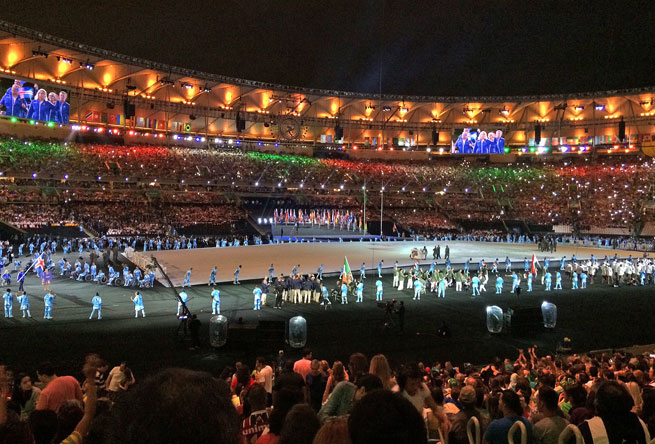 The 2016 Paralympic opening ceremony
The 2016 Paralympic opening ceremony
Are the Paralympians 'superhuman'?
John Head, from the University of Salford, salutes the prosthetics that will be on display at Rio - and, more, the acheivements of the people who sport them:
More perhaps than any other visual event, Paralympic sprinting shows what can be achieved by dedication, commitment and a design that challenges what can ostensibly be called the “accepted” boundaries. But we mustn’t forget that these feet and other prosthetic devices are only as good as the person who is using them. And it is only in conjunction with a dedicated, elite, talented athlete that we can see the stunning performance outcomes that both enthral and amaze.
The achievements of the Paralympians, alongside societal shifts towards more inclusivity and the celebration of diversity has had a dramatic effect on the lives of people living with disability.
And changes in the perception of disability in society has led many people with limb absence to feel empowered to embrace their physical status, rather than hide it from public view – showcasing their prostheses with colourful and dynamic components. They are proud to wear their prostheses as positive attributes, rather than illustrations of any perceived disability.
... or is it time to put an end to 'inspiration porn'?
Dr Frances Ryan explains why the suggestion that paralympians are "inspirational" is problematic:
See more from Frances Ryan at The Guardian
London 2012 did shift pereceptions of para sports
The last Paralympics did, according to research by Bournemouth University, change how the wider public thought about para sports:
The participants were interviewed in four phases before and after the London 2012 Paralympic Games, and Dan said that, before the event, there did not seem to be much change in the way people were talking about disability and disabled sports.
"There were a lot of barriers - people didn't know how to talk about it," he said.
"Many people did not have experiences of disability because it was very rarely on our screens. There was not a great deal of knowledge or interest in Paralympic sport.
"But there seemed to be a lot of good will towards it - people saying "It should be on TV, it's a worthwhile thing, but I won't really go out of my way to watch it."
However, after the London 2012 Paralympic Games, people's perceptions and experiences of disability and disabled sport seemed to change.
There's a crucial way in which the Paralympics isn't equal to the Olympics
Although Paralympians train hard for their games, and make similar sacrifices to the Olympians, their rewards aren't always equal:
For all her hard work though, [US sking and basketball champion Alana] Nichols' medals are worth less than those of Olympians. That's because Paralympians get only $5,000 from the U.S. Olympic Committee for winning gold. Olympians get $25,000 for their gold medals.
Silver medals are worth $15,000 for Olympians, while Paralympians only get $3,000. Bronze medals are worth $10,000 for Olympians and $2,000 for Paralympians.
"It's not unlike equality for women in the workforce -- it's not fair," Nichols said in an interview with CNNMoney. "A woman can do the same job as a man and get paid less. That's what happening with Paralympians and it's not fair -- we're competing just as hard with less of our bodies."
Read the full articl at CNN: Paralympians' gold medals are worth less than those of Olympians
... but that isn't the case everywhere
Indian paralympians will be treated on a par with their Olympic equal numbers:
In a fine gesture, the Sports Ministry announced that medallists from the Paralympics in Rio de Janeiro will be given cash awards at par with the medal winners of last month's Olympic Games.
"Gold medallists of #Paralympic Games are entitled to Rs 75 Lacs, Silver Rs 50 Lacs & Bronze Rs 30 Lacs as cash award from MYAS," the Ministry tweeted from its official handle. "This cash award to the #Paralympic medallists is at par with medallists of #Olympics," it added.
Money has been something of a worry in the run-up to the Games
Last week, there was still a cloud over the Paralympics as the event had run out of money and had huge swathes of unsold tickets. The #filltheseats campaign formed on social media to try to address the problems - but there was hope it would do more than just stick bums on chairs:
Justin Zook, a three-time gold-medal Paralympic swimmer, put it like this: "I’m hoping this [#FillTheSeats] campaign will find a way to have a long, lasting impact, rather than just an immediate PR and financial effect."
It’s amazing that Paralympians will get to compete on the world's stage in Rio. But just the opportunity to compete isn't enough. We need more media coverage of athletes with disabilities. We need more education about the opportunities for children with disabilities to get involved with sports. We need more than just 66 hours of coverage of the Paralympics.
One of the threats to ticket sales was the Zika virus
There were lots of reasons selling tickets to the Paralympics had been an uphill task; one of the challenges had been the perceived risk of the Zika Virus. However, that threat may have been overstated - as during the Olympics last month, people hadn't been falling ill. At all:
"There have so far been no laboratory confirmed cases of Zika virus in spectators, athletes or anyone associated with the Olympics," the World Health Organization saidThursday on its website.
Now, no cases doesn't mean no one caught Zika at the Summer Games. About 80 percent of people who get infected don't know it. They don't have any symptoms. And those who do get sick often have only mild symptoms. So the vast majority of cases go unreported.
But so far, it's looking like predictions from computer models were pretty much spot on: Zika wasn't a big threat in Rio de Janeiro during the Olympics.
Read the full article at NPR: Guess How Many Zika Cases Showed Up At The Olympics?
The history of the Paralympics hasn't always been smooth
The University Of Kent's Julie Anderson reviews Steve Bailey's Athlete First: A History of the Paralympic Movement for Reviews In History, and discovers a tale of a movement that hasn't always progressed smoothly:
As the embryonic Paralympic movement develops it becomes more administratively organised and Bailey follows the action off the sporting field into the Committee room. He focuses on the inevitable progression toward a united Paralympic movement, and argues that the dominance of individuals such as Guttmann, rather than uniting, divided the disabled sporting groups, which caused problems in the initial stages of assembling all associations under the one umbrella organisation. An International Co-ordinating Committee (ICC) was established in the 1980s with a number of representatives from different disabled groups. Naturally there were controversies, as the ICC endeavoured to solve a number of long-term issues. The realisation that there was little point in mere athletic participation, that public appeal and spectators were one of the most important aspects to modern elite sport, resulted in decisions such as the combining of different ranges of locomotor classifications to make them more appealing to the watching public. At the 1984 Los Angeles Olympics, wheelchair racing was held as a demonstration sport. This set a precedent for disabled sport to be featured at able-bodied Olympics although both games were kept entirely separate. Furthermore, the term 'Paralympics' continued to be controversial throughout this period, and it took some time before the debate was finally resolved.
Bailey states that the 1988 Seoul Games heralded a new era in Paralympic sport. While this is probably because the sporting organisations were working better together than previously, this is also because the Paralympics began to imitate the able-bodied games more closely, in both positive and negative ways. Similarly to able-bodied sport, there was more focus on the nation and less on the disability. The Seoul Games were held in the same venue as the able-bodied games, which, Bailey points out, had not happened since 1964. Ongoing controversies such as logos, inclusion of athletes and the measurement of disability still continued but organisationally, the ICC handed over control to the International Paralympic Committee, which was more closely associated with the IOC.
Read the full review at Reviews In History: Athlete First: A History of the Paralympic Movement
Officials are looking out for 'boosting'
Much of the focus on the potential for cheating before the games was on drugs, and the ban on Russian athletes. But there's another potential way some paralympians could give themselves an unfair advantage - the practice of boosting:
To get a rapid rise in blood pressure, wheelchair athletes may resort to another solution: inducing a state called autonomic dysreflexia. That is a reflex that occurs when the lower part of their body is exposed to painful stimuli, such as filling the bladder to capacity, using tight leg straps, or sitting on a sharp object.
This elevated blood pressure can cause a heart attack or stroke -- but since the athletes can't feel it, some think the risk is worth taking. Studies have shown athletes with a spinal cord injury who boost can get up to a 10 percent improvement in some races.
"It's an extreme thing to do and we have to constantly remind athletes it's very dangerous," said Craig Spence, a spokesman for the International Paralympic Committee.
The IPC banned the practice in 2004 and says it doesn't have evidence boosting is widespread. At the Beijing Paralympics, 37 athletes competing in events thought to be at high risk of boosting were tested. None were positive.
According to a report by the World Anti-Doping Agency, about 10 out of 60 athletes surveyed at the Beijing Paralympics admitted having boosted at a major competition.
Read the full article at ESPN: Paralympics officials on the lookout for boosting
It can still be difficult for athletes with Intellectual Disabilites to take part
Jan Burns, head of the School of Psychology, Politics and Sociology at Canterbury Christ Church University, has been working to try and increase opportunity for athletes with IDs to be included in the Paralympics:
For athletes living with intellectual disabilities (ID), the Rio 2016 Paralympic Games are as accessible as they have been since the Sydney Games 16 years ago, yet the amount of events open to these athletes still only stands at 3%.
Back in 2000, it transpired that a large number of the Paralympic Spanish Basketball team did not have learning disabilities, after they received a gold medal. The team were stripped of their awards and the International Paralympic Committee (IPC) banned all athletes with learning difficulties from competing in the Games until more rigorous eligibility tests were implemented.
[...]
In the four years since the London Games Professor Burns, who is also Head of Eligibility at the International Association of Sport for Para-athletes with Intellectual Disabilities (INAS), has been continuing her work aiming to enable more athletes with intellectual disabilities to qualify for more events in the Rio. She has successfully contributed to over 1000 athletes being added to the master list of eligible athletes. In Rio, ID athletes will be competing in more athletic and swimming events than in London, including the 400m, 800m and the 1500m in athletics and the medley races in swimming. She has also been involved in training a further 15 intellectual disability classifiers for the IPC and has worked with over 35 psychologists around the world as part of managing the eligibility process.
Professor Burns said: “I was hoping to say that we would have more intellectually disabled athletes in Rio than London, however there are other factors this year which have skewed this, one factor being that Russia’s athletes are excluded and their places are currently being allocated.
“However, I am absolutely thrilled with the progress we have made since London 2012, although there is still more to be done. Myself, and a number of doctorate-level students from the University’s Applied Psychology programme, are currently researching and developing a second class for more impaired athletes competing in the INAS events. We are also working with new sports such as Taekwondo, Nordic Ski and Equestrian and it would be fantastic to see further developments for the Tokyo 2020 Games and future winter Games.”
Get to grips with the classification system
That classification system for athletes is important - it's the point where the metaphorical playing field is levelled. The official site explains the various strata that cover the Games:
The classification system for athletes has been used since the 1950s to ensure fairness between the competitors in Paralympic sports. It divides the athletes of a given sport into classes, which ensures that an athlete or team competes under equal conditions against their adversaries. Understand the different classifications in use for the Rio 2016 Paralympic Games.

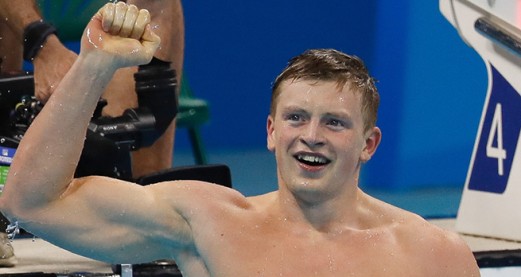
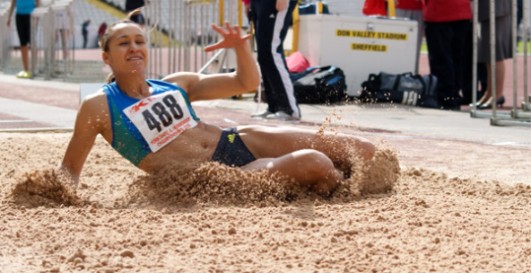

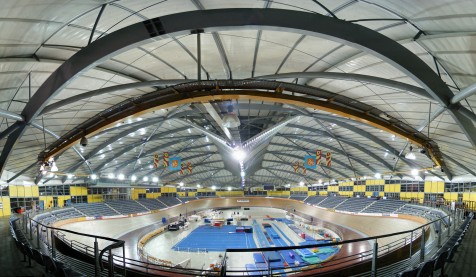
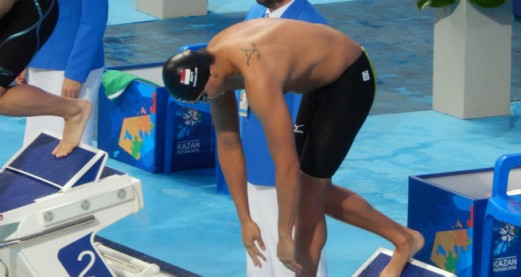
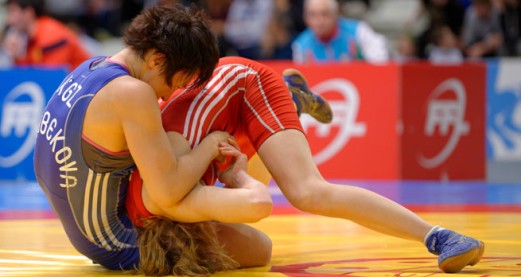


Rate and Review
Rate this video
Review this video
Log into OpenLearn to leave reviews and join in the conversation.
Video reviews